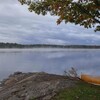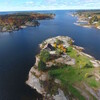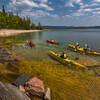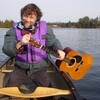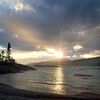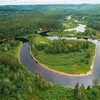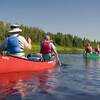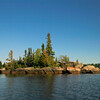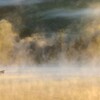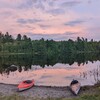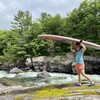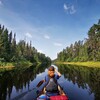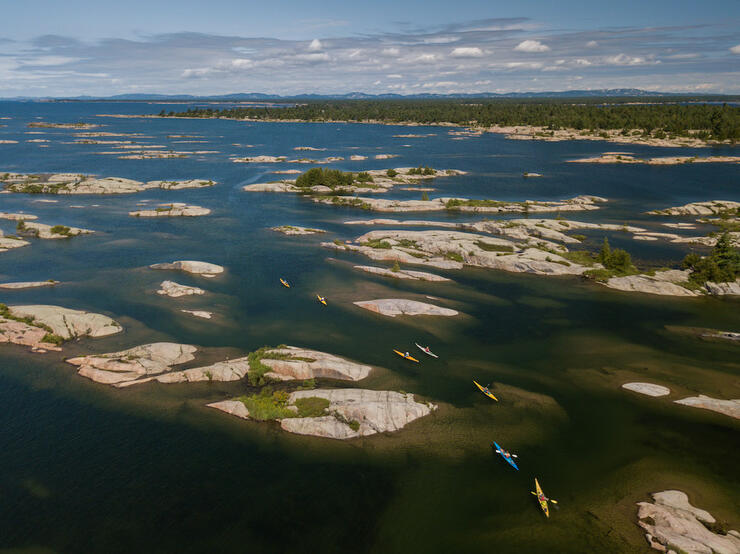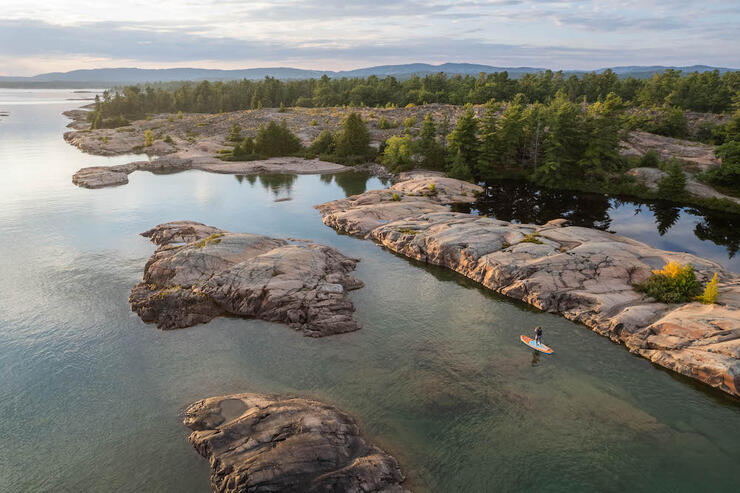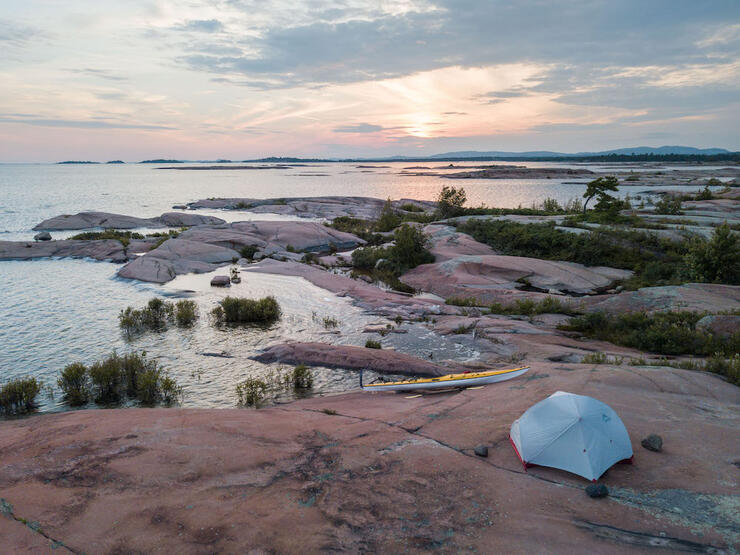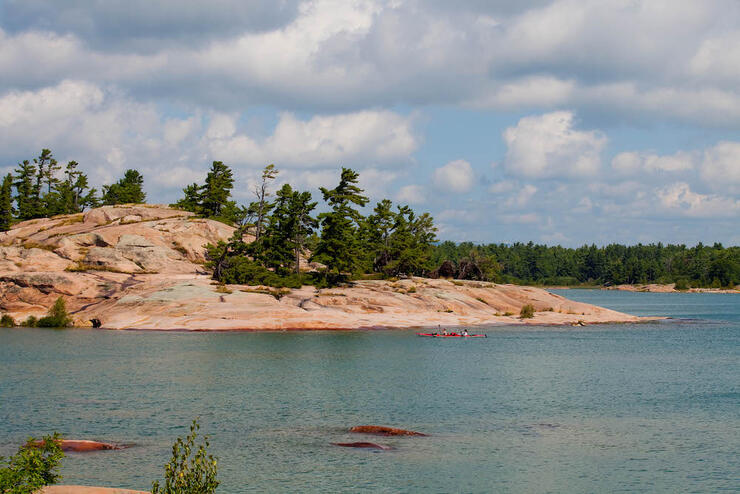Guide to Camping on Philip Edward Island
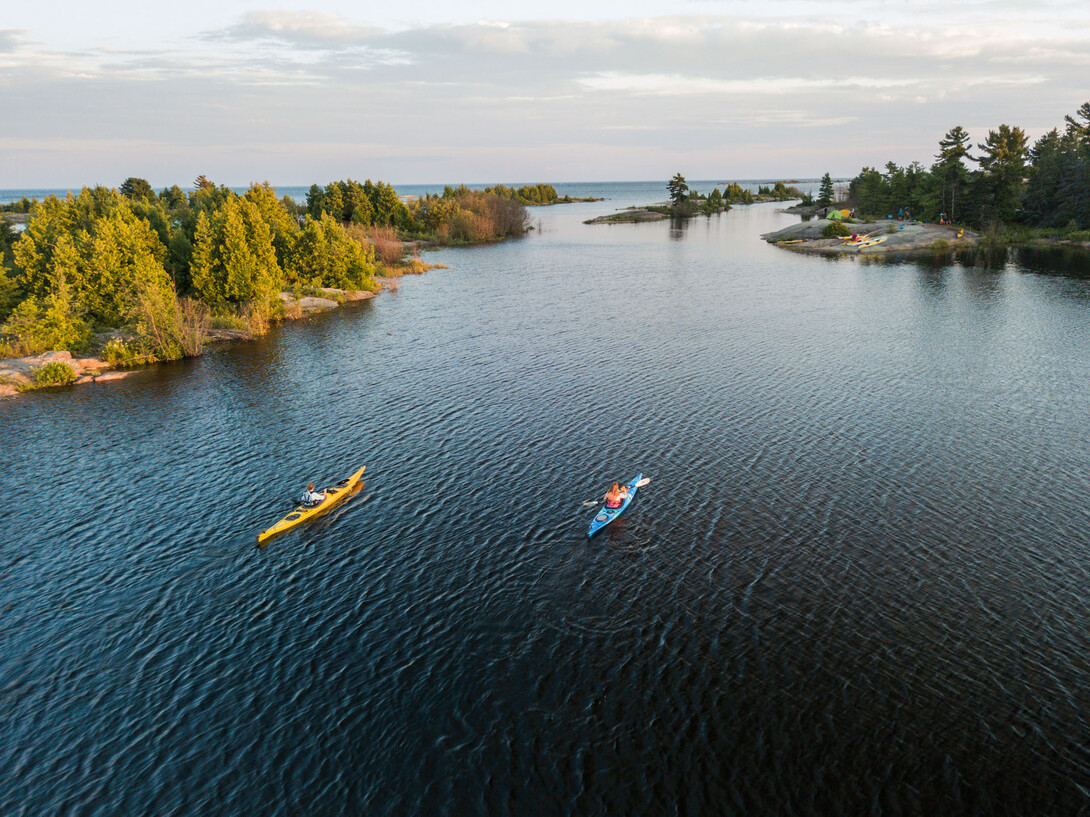
Philip Edward Island is an absolute gem. The eroded mountains of Killarney slide into the waters of Georgian Bay, with slabs of granite and quartz creating rounded islands and cliffs and a labyrinth of inlets and bays. It’s a fascinating shoreline topped with the iconic wind-swept pines of Georgian Bay. Then there’s the freshwater of the Bay itself. It’s nearly clean enough to drink (please don’t), crystal clear and by mid-summer it’s bathwater warm. Welcome to paradise.
This is a world class paddling destination and circumnavigating Philip Edward Island is a rite of passage for many paddlers. The scenery can’t be beat and you’ll remember the campsites for a lifetime.
Where is Philip Edward Island?
South of the village of Killarney, Philip Edward Island is just off the mainland in Georgian Bay in northeastern Ontario. Collins Inlet cuts an east to west corridor separating the island from the mainland by less than a kilometre. The southern shore is exposed to the waves and winds of the Bay, creating an incredible shoreline. Hundreds of islands line the shoreline providing endless places to explore and paddle. It takes just over four hours to drive here from downtown Toronto but is worth every second of effort.
How do you get to Philip Edward Island?
You can get to Philip Edward Island in just about any watercraft, but obviously some are better than others. Without a doubt a sea kayak is the best option. It cuts through the water efficiently, provides tons of room for camping gear and supplies, and if the waves pick up a bit, a sprayskirt keeps water out of the boat. Canoeing Philip Edward Island is also possible, you’ll just be limited by weather; if the wind picks up and creates waves you may struggle to get anywhere safely. Airbags or a canoe cover would help, but sometimes the waves are simply too big for an open boat. Standup paddleboards are also an option but present their own set of challenges.
The quickest way to get here is to park at the end of Chikanashing Road, off of Highway 637 and just inside the boundaries of Killarney Provincial Park. There’s a boat launch here and it’s a short paddle downriver to Georgian Bay. From there you’ll paddle south to cross Collins Inlet and get to the island itself. It’ll be on your east side.
Planning Your Trip
Route
Philip Edward Island is all Crown land, so there’s no booking ahead to get a spot, simply show up and start camping (non-Canadian residents must purchase a Crown land camping permit or use the services of an outfitter). The put-in for most trips to Philip Edward Island is at the end of Chikanashing Road. The put-in is technically part of Killarney Provincial Park, so you’ll need a permit to leave a vehicle here. You can get those at the Park Office at George Lake, off of Highway 637, right on the way to Chikanashing Road.
Depending on what you want to do, you should plan for at least two nights. Circumnavigating Philip Edward Island is a 50-km trip. You can paddle around the island in either direction, but the preferred way is counterclockwise due to the prevailing winds. It’s a classic five- to seven day trip, although it can be done in as little as three.
If you prefer to take it easy, simply paddle out from Chikanishing River and across Collins Inlet to explore the southern shoreline of Philip Edward Island. There are hundreds of islands here and most of them have an incredible camping spot. Set up a base camp and do day trips.
Philip Edward Island is also accessible via Point Grondine Park, an Indigenous protected area on the mainland shore of Georgian Bay. Getting to the island from here involves four portages (totalling about 2 km depending on water levels), so it isn’t the easiest way to access Philip Edward Island—but it’s a good adventure. Launching here will put you at the east end of the island.
Campsites
If you're wondering is Philip Edward Island Crown land—the answer is yes. Which means it’s kind of a free-for-all on where you can camp. The simple answer is you can camp anywhere. The obvious answer is don’t be a jerk about it. Common courtesy is if you absolutely need to camp close to where other people are already camping, go and talk to them. Make sure they’re cool with it and try to camp out of earshot and eyesight. Otherwise try to find your own spot. Practice the, take only photographs, leave only footprints ethos. Heck, why not pick up any garbage other campers left behind?
Finding campsites isn’t too difficult; you’ll often find campfire rings, signs of previous campfires or rocks stacked strategically around flat spots (used as tent pegs where there’s no soil). There are no picnic tables, but occasionally you’ll find a fish cleaning station or table built by previous campers.
You’ll want to avoid sites exposed to the Bay if you’re expecting wind or rain, and be sure to camp far enough from the water that waves or spray won’t become an issue overnight.
There are no toilets or thunderboxes on Philip Edward Island, so it’s important for everyone to be vigilant on where they relieve themselves. It’s recommended to prepare a toilet at least 100 m from the shore, ideally on ground sloping away from the water. Individuals should dig a 20-cm (8-inch) hole in the soil and cover it each time. Even better is to pack out excrement in a portable toilet or plastic bags. Check out Leave No Trace for tips on low-impact camping best practices.
Philip Edward Island bears do exist. And they can swim. Just because you find yourself on an island doesn’t mean it's free of bears. To be safe make sure your food is sealed in a bear-resistant container like a tripping barrel, and hang it in a tree overnight. RecSafe With Wildlife offers great guidance to stay safe in bear country.
Points of interest
The main points of interest on any Philip Edward Island paddling trip is the landscape itself. It’s absolutely mesmerizing and otherworldly. It’s hard to believe it’s Ontario and difficult to comprehend that it’s only about a four hour drive (plus some paddling) from downtown Toronto. Glacial potholes, wave-shaped rock formations, pink granite and quartz veins can be found throughout the many islands.
There’s a high point (on some maps it’s labeled Blockbuster Island) just north of East Fox Island that offers an incredible view of the landscape.
Collins Inlet, the protected channel on the island’s northern shore, has tons of history. On the east end of Collins Inlet, the Collins Inlet Village ruins are at Sawdust Bay. At one point this village had a population of 200. Fire destroyed the mill here in 1918 and partly led to the village's demise.The remains of the town’s pier can be seen along the shoreline.
If you want to get some hiking in, the only official trail is the Chikanishing Trail at the put-in. It’s a fairly easy 3-km loop. Otherwise the exposed granite found throughout the area makes for great exploration by foot.
If you’re here in the summer the swimming is tough to beat. If the weather is calm you can swim just about anywhere—and sometimes even swim from one tiny island to another. Obviously be safe out there and don’t take any unnecessary risks.
Don’t forget your fishing rod (and Ontario fishing licence!) on a trip here. Philip Edward Island fishing is amazing. Collins Inlet is particularly good, but you’ll find excellent bass, walleye and pike throughout the area.
Rentals
If you don’t own a boat or want to eliminate the hassle of bringing your own boat, a number of local outfitters offer sea kayak, canoe and camping gear rentals. You can rent a kayak or canoe at Killarney Outfitters, just outside of the town of Killarney. Killarney Kanoes runs a similar business. Both companies rent everything to get you out to the island. They’ll also know current conditions and can rent you all the gear you need for a backcountry camping trip. Tents, sleeping bags, mattresses, stoves, and lanterns—they’ve got it all. Other places that rent gear in the area include Hartley Bay Marina, White Squall and Grundy Lake Supply Post.
Guided trips
If you want someone else to do the planning there are outfitters that do exactly that. Black Feather offers multiple trips in the area, many of their Georgian Bay sea kayak trips include the shore of Philip Edward Island. Voyageur Quest has a 5-day guided kayak trip that starts and finishes in Killarney. This is a perfect chance to experience Phillip Edward Island and the islands surrounding Killarney. Meals, tents and nearly everything else are provided, so you just need to show up and hop in a boat. There’s also the option of creating a custom trip with Black Feather, Voyageur Quest, MHO Adventures, Horizon Adventures or Ontario Sea Kayak Centre.
Maps
The Adventure Map makes a Philip Edward Island & Area map that is touted as a sea kayaking guide and is the perfect companion for any trip to this area. There are no campsites marked on this map, however it is Crown land so technically you can camp anywhere. Look for old fire pits, or circles of rocks to find old campsites. Sometimes there are makeshift tables, or fish cleaning stations left over from previous campers.
If you feel like you need a Philip Edward Island map with campsites marked on it, Unlostify’s Killarney map also includes the island and provides the location of campsites. You can buy a paper map from them or simply download the map and go from there. Don’t expect to download the map while on the island though; cell service is spotty and unreliable.
Safety and Weather
Weather is a major concern regardless of If you’re looking to circumnavigate Philip Edward Island, or just taking a short paddle in the area. Philip Edward Island weather can change quickly and wind and waves coming from the Georgian Bay side of the island can present some major problems. If you’re in a sea kayak with a skirt you should be okay with some waves, but an open canoe can only take so many waves before it will swamp. Thankfully the many islands surrounding Philip Edward Island can offer protection from wind and waves and there’s often opportunity to shelter on land should the weather turn. The best way to deal with inclement weather is to get to shore on the lee side of the island. Collins Inlet offers a fairly well-protected strip of water, but even here, it’s always advisable to use caution.
Checking with some of the local outfitters before your trip is a good idea. Killarney Outfitters and Killarney Kanoes will have a good idea on what weather is expected, as will the staff at Killarney Provincial Park.
A first-aid kit is also an obvious mandatory piece of gear.
If you’re new to kayaking or wilderness camping, why not take a paddling course with a company like Horizons Adventures before going it alone? Ontario Sea Kayak Centre near Parry Sound also offers instruction.
Recommended Articles
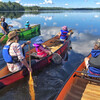
Best Family Canoe Trips

Secret Cascades
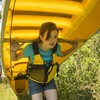
It's Time for a Paddle
Sun and Sand
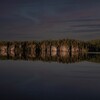
8 Unforgettable Lakes in Wabakimi Provincial Park
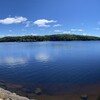
Woodland Caribou Canoe Trip
8 Secret Paddling Hotspots In Ontario
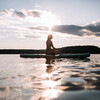
Reset on the Water
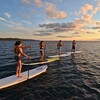
SUPreme Adventure
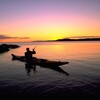
Kayaking in Northern Ontario
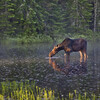
Do you want to take this pic?
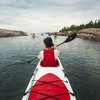
Go Ahead, Be a Joiner
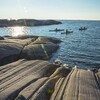
Best Paddling Routes
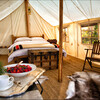
Why Not pamper yourself?
The Missing Link of "the Great Trail"
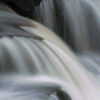
Wild whitewater
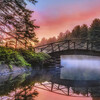
Backcountry for Beginners

A remarkable journey
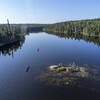
The Best Canoe Tripping in Ontario

